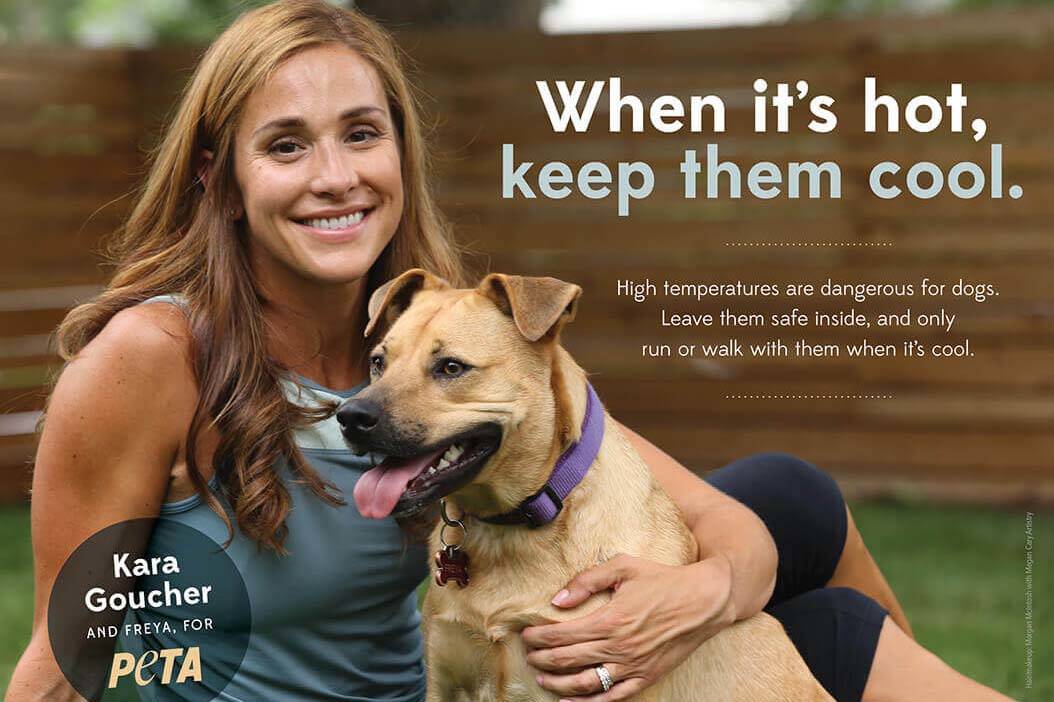Owners urged to keep pets inside and out of cars to avoid heatstroke
With a wave of excessive heat warnings issued for the Las Vegas Valley, residents are urged to keep in mind the safety of their pets as animals left outdoors or in parked cars can quickly succumb to heatstroke.
So far this year, 13 animals have died from heat-related causes nationwide, with one of those in Las Vegas last month, according to the People for the Ethical Treatment of Animals.
Dr. Aaron Bivens, a veterinarian at South Buffalo Springs Animal Hospital, encourages keeping pets safe from the heat by keeping them indoors in air conditioning, regularly giving fresh water, avoiding walks during the day and never leaving them in a parked car.
He advises not taking pets on errands during the summer as even cracked or open windows are not enough to keep the car cool during 100-degree days. Shaded patios may also not be enough to keep pets cool while outside so Bivens urges pet owners to have their furry friends spend as much of the day as possible inside the house.
Leaving dogs in enclosed spaces like cars is an extreme danger since dogs’ body temperature run between 99-102 degrees Fahrenheit. Once their temperature rises above 103 degrees for an extended period of time, vital organs may go into shock, Bivens said.
“Heatstroke means that after your liver and your intestines go into shock and you’re still overheating, the next shock organ is your brain. Once your brain fries that’s the stroke,” Bivens said. “That’s hard to reverse so if your dog is exhibiting heat exhaustion, we need to cool them off slowly.”
Cooling off a dog should be done gradually to prevent rebound hypothermia. When that happens, they get too cold and are not able to warm up again because the body is in a state of shock. Bivens recommends putting either water or rubbing alcohol on the dog’s ear flaps and paw pads along with giving plenty of water to cool them down. Do not submerge them in an ice bath, he said.
Dogs who have long hair, are obese and/or have short snouts (flat-faces) are more prone to heat exhaustion and heatstroke, Bivens said. Symptoms include excessive panting, weakness/lethargy, vomiting and lack of appetite.
“Initially, your dog may vomit, but you may not be aware of liver damage for a week later on blood work,” he said. “If your dog is heatstroked, they need to be hospitalized.”
Bivens said pet owners should also keep in mind the hot asphalt while taking their pet on walks. Dogs should be walked in the early morning as soon as the sun comes up or at night; if the ground is too hot to the touch, then it’s too hot for the dog’s paws, Bivens said.
If the concern arises that a pet may be experiencing heat exhaustion or heatstroke, call an emergency vet clinic and have a vet assess them.
At South Buffalo Springs Animal Hospital, Bivens said, “we see about one death every one to two weeks. We see heat exhaustion about twice a week, and heatstroke maybe monthly.”
Contact Jannelle Calderon at jcalderon@reviewjournal.com. Follow @NewsyJan on Twitter.


















